Pollinators like bees are the unsung heroes of our ecosystems. Without them, many of the fruits, vegetables, flowers, and seeds we rely on wouldn’t exist. Bees, in particular, play a vital role in transferring pollen from one plant to another, ensuring successful fertilization and plant reproduction.
But in recent years, bee populations have been declining due to habitat loss, pesticides, and climate change. The good news? You can help right in your own backyard, balcony, or windowsill garden by planting bee-friendly plants and creating a pollinator-friendly environment.
This comprehensive guide will show you how to plant for pollinators and attract bees to your space while supporting a healthier planet.
Why Are Bees Important?
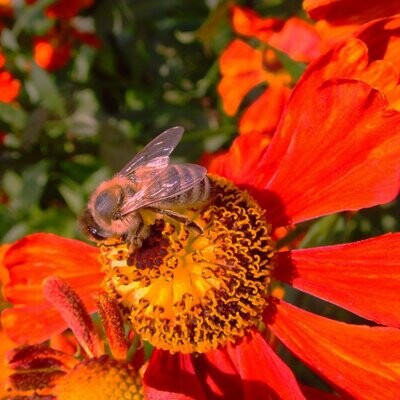
Bees are crucial pollinators for over 75% of flowering plants and 35% of global food crops. Without them, foods like apples, tomatoes, cucumbers, almonds, and berries would become scarce and expensive.
Key benefits of bees:
- Help plants produce fruits and seeds.
- Maintain healthy biodiversity.
- Support food security.
- Keep ecosystems balanced.
Encouraging bee-friendly habitats in your garden makes a significant difference locally and globally.
How Do You Attract Bees?
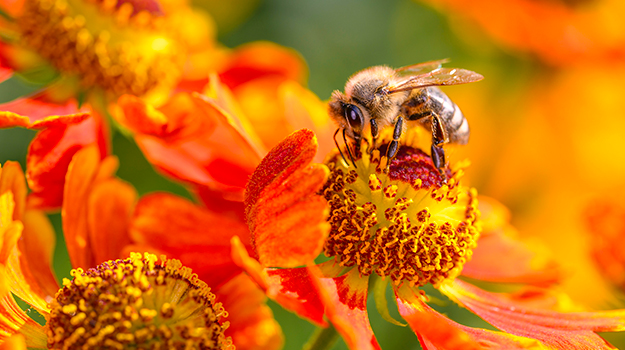
Creating a garden where bees feel safe, nourished, and welcome involves choosing the right plants, providing water, shelter, and avoiding harmful chemicals.
1. Choose the Right Flowers and Plants
Bees are attracted to bright, fragrant, nectar-rich flowers with open or shallow blooms that make it easy for them to access pollen.
Best Flowers to Attract Bees:
| Flower Name | Bloom Season | Type |
|---|---|---|
| Lavender | Summer | Perennial |
| Sunflowers | Summer-Fall | Annual |
| Marigolds | Spring-Fall | Annual |
| Zinnias | Summer-Fall | Annual |
| Coneflowers | Summer-Fall | Perennial |
| Cosmos | Summer-Fall | Annual |
| Bee Balm | Summer | Perennial |
| Asters | Fall | Perennial |
| Wildflowers | Varies | Mixed |
Pro Tip: Plant a mix of native, wild, and perennial species for year-round bee activity.
Herbs That Attract Bees:
- Basil
- Mint
- Thyme
- Oregano
- Chives
- Rosemary
- Lemon Balm
Let herbs flower (bolt) occasionally — bees love the tiny blossoms.
2. Provide a Continuous Bloom
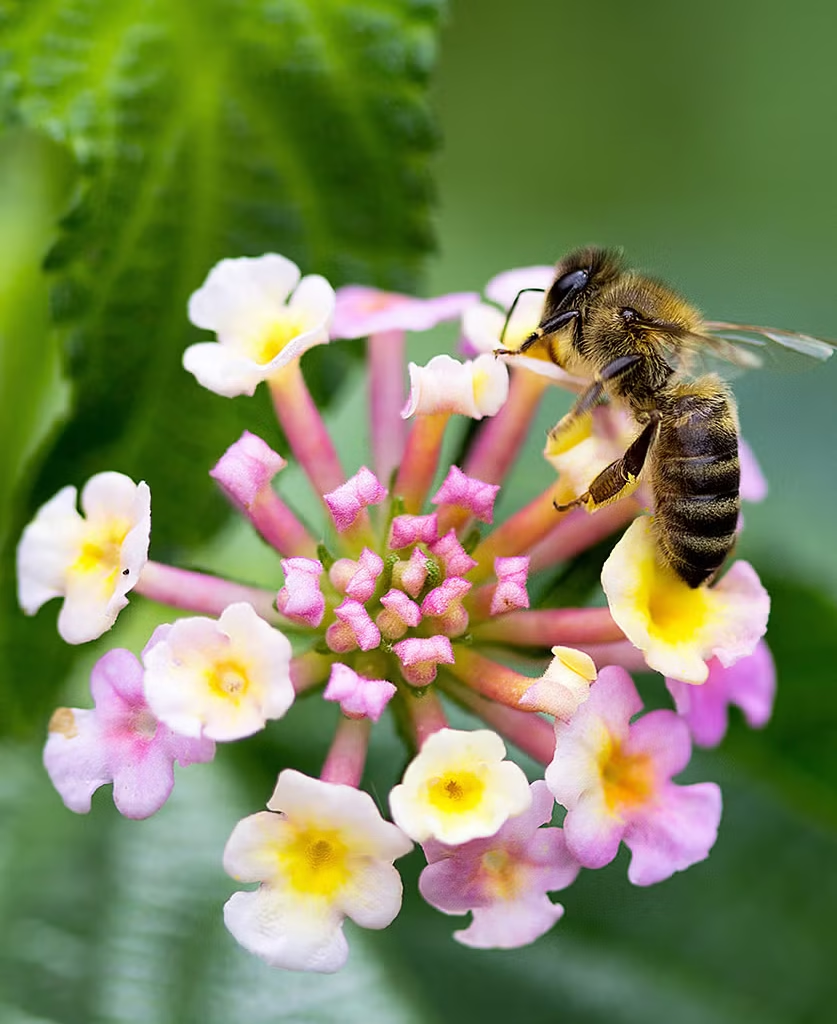
Bees need food all year, not just in summer. Plant a variety of species that bloom from early spring through late fall to ensure a steady supply of nectar and pollen.
Example plan:
- Spring: Crocus, Bluebells, Hyacinths
- Summer: Lavender, Coneflowers, Zinnias
- Fall: Asters, Goldenrod, Sedum
3. Use Native Plants
Native plants are naturally adapted to your local climate and soil, requiring less maintenance and providing the best food source for native bee species.
Check with your local nursery or gardening extension office for native plant recommendations.
4. Avoid Pesticides and Chemicals
Many garden chemicals are harmful to bees. Insecticides, especially those containing neonicotinoids, can disorient or kill pollinators.
Safer alternatives:
- Neem oil (apply early morning or late evening when bees aren’t active)
- Insecticidal soap
- Handpicking pests
- Natural predators like ladybugs
Tip: Always read labels carefully, even on organic products.
5. Create Bee Habitats
Bees need more than flowers — they also need shelter and nesting spaces.
Simple ways to provide this:
- Leave a few patches of bare, undisturbed soil for ground-nesting bees.
- Install bee hotels or nesting boxes for solitary bees.
- Let deadwood or hollow plant stems remain in a corner of your garden.
- Avoid over-tidying the garden in winter; many bees hibernate in leaf litter and plant debris.
6. Offer Clean Water
Bees need a safe, shallow water source to drink from and cool their hives.
DIY bee water station:
- Fill a shallow dish or saucer with water.
- Add pebbles or floating corks for bees to land on while drinking.
Tip: Refresh water daily and keep it clean.
7. Go Organic and Natural
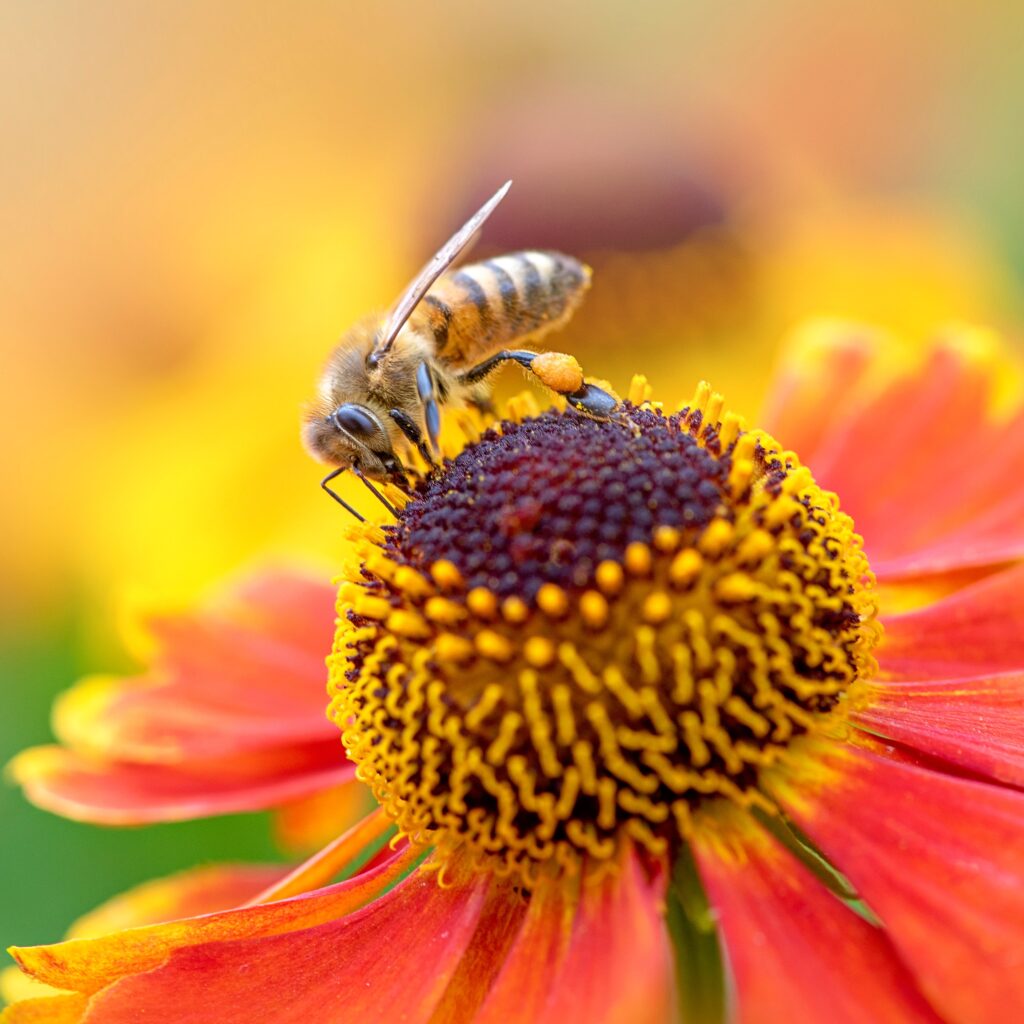
An organic, chemical-free garden is far safer for bees. Use organic compost and natural fertilizers like compost tea, fish emulsion, or seaweed extract. Encourage beneficial insects like ladybugs and lacewings to naturally keep pests in check.
8. Plant in Clumps
Bees are more likely to visit gardens with clusters of the same flower species. Planting in groups of 3–5 plants makes it easier for bees to forage efficiently without using too much energy.
9. Choose Single, Open-Flower Varieties
Modern hybrid flowers with multiple layers of petals may look pretty but can be difficult for bees to access.
Choose traditional, single-petal, open-center flowers where pollen and nectar are exposed and easy to reach.
Bonus: Fun Facts About Bees in the Garden
- A single honeybee can visit 50–100 flowers in one trip.
- Not all bees live in hives; many are solitary and nest in the ground.
- Different flowers produce nectar with unique flavors — contributing to the distinct taste of local honey.
10 Best Bee-Friendly Plants for Beginners
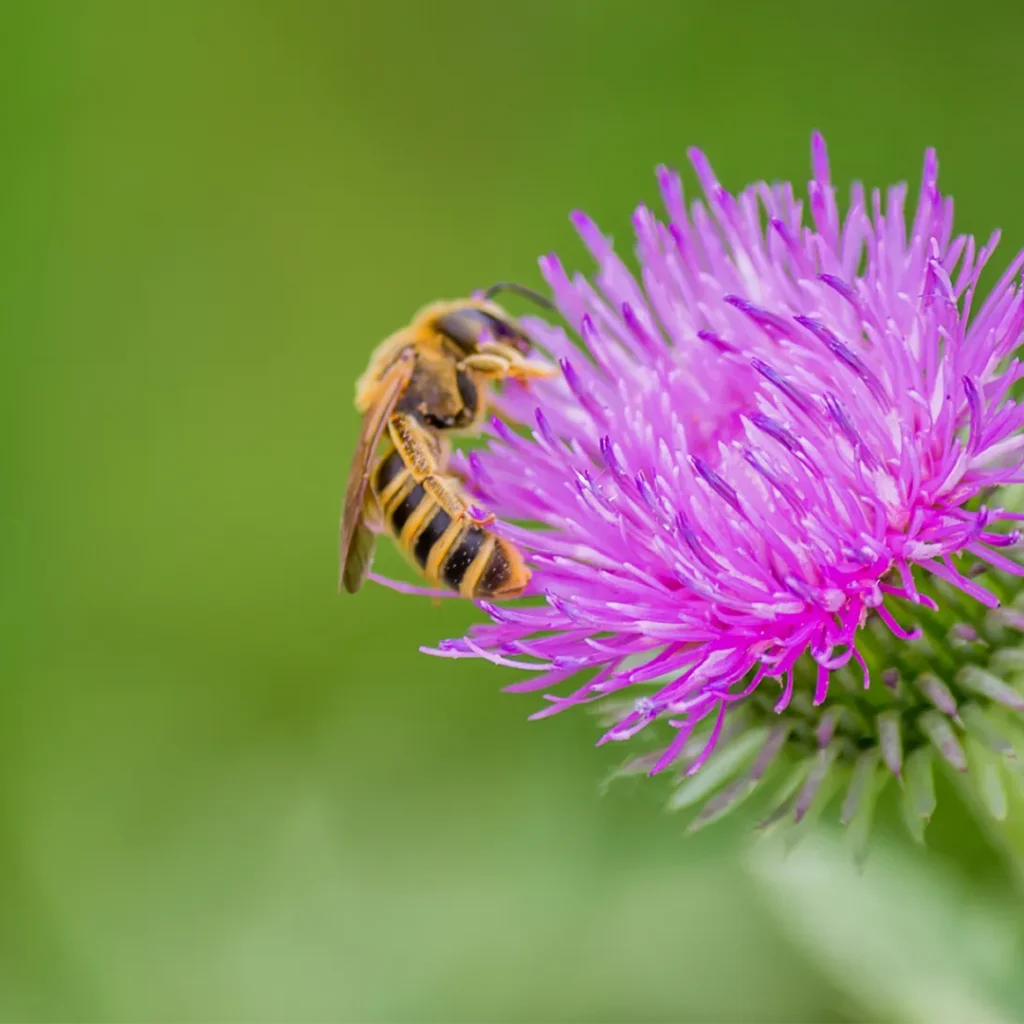
If you’re new to pollinator gardening, start with these reliable favorites:
- Lavender: Easy to grow, aromatic, loved by bees.
- Sunflowers: Bright, bold, and nectar-rich.
- Bee Balm: Vibrant blooms, attracts multiple pollinators.
- Zinnias: Colorful and perfect for continuous summer blooms.
- Coneflowers: Hardy perennials with large, open blooms.
- Basil: Easy herb that flowers beautifully.
- Marigolds: Pest-repelling and bee-attracting.
- Rosemary: Hardy herb with tiny bee-loved flowers.
- Asters: Late bloomers that feed bees in fall.
- Wildflowers: Low-maintenance, diverse, and naturally bee-friendly.
Final Thoughts
Creating a pollinator-friendly garden is one of the simplest and most meaningful ways you can support local biodiversity, strengthen ecosystems, and contribute to global food security. Even a small balcony, terrace, or windowsill garden can become a thriving pollinator haven with the right plants and practices.
By planting for pollinators, you’re not just growing flowers — you’re helping to nurture life itself. So grab your seeds, fill those pots, and welcome the bees to your garden.




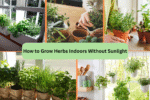
Leave A Comment